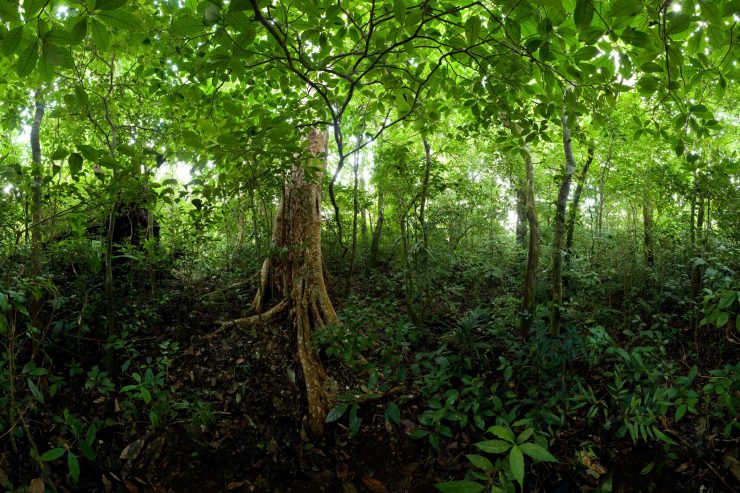International research co-authored by Joshua Fisher, associate professor in Chapman University’s Schmid College of Science and Technology, suggests that studying root function in tropical forests could help vegetation models improve predictions of climate change. Their study was published on Feb. 28 in New Phytologist.
When it comes to understanding climate change, vegetation models are vital tools that help scientists study plants’ adaptation strategies to changing environmental conditions, including drying, warming and elevated carbon dioxide levels. However, these models have historically omitted one of the largest biomasses on earth: tropical forests.
“Tropical rainforests are among the least understood biomes on the planet, but exert among the greatest impacts on global climate, water and carbon cycling,” Fisher said. “Our team coalesced the latest scientific understanding of how these ecosystems function together with how to mathematically capture these dynamics in global models. This forges a path forward to improved predictions of the fate of Earth under a changing climate.”
An international group of scientists – called TropiRoot – led by Colorado State University has been working to provide much needed representation of tropical forests and root function in vegetation models. After studying root functions by synthesizing literature on the subject and measuring roots in tropical ecosystems in Costa Rica, Panama, Puerto Rico and Singapore, the team has contributed to a greater understanding of how carbon storage and belowground dynamics will respond to global change.
According to the study, tropical forests contain 30% of global soil carbon, most of which likely originates from root biomass, representing the second highest soil carbon storage rate after permafrost. By acting as carbon banks, tropical forests can help to prevent severe effects of climate change, but these banks are at risk as tropical forests experience warming, shifting rainfall patterns, deforestation and relative depletion of soil nutrients due to elevated levels of carbon dioxide in the atmosphere.
Compared to temperate forests, tropical forests have greater biodiversity, faster-acting processes and seasons based on rainfall rather than temperature. Over 50% of tropical forests are on old and strongly weathered soils, meaning their soils lack essential nutrients like phosphorus, so root systems have been forced to develop more efficient processes for recycling minerals. Additionally, tropical root systems have recently been described as growing differently from roots in other ecosystems, with unique combinations of physical traits and symbiosis with fungi and bacteria.
These unique features, combined with a lack of funding to support tropical forest research, have historically made tropical forests difficult to study and underrepresented in vegetation and global land-climate models. Better understanding how these aspects are responding to global change could give insights into the future of land-climate feedback.
Adapted from a Colorado State University press release.
###
About Chapman University
Founded in 1861, Chapman University is a nationally ranked private university in Orange, California, about 30 miles south of Los Angeles. Chapman serves nearly 10,000 undergraduate and graduate students, with a 12:1 student-to-faculty ratio. Students can choose from 123 areas of study within 11 colleges for a personalized education. Chapman is categorized by the Carnegie Classification as an R2 “high research activity” institution. Students at Chapman learn directly from distinguished world-class faculty including Nobel Prize winners, MacArthur fellows, published authors and Academy Award winners. The campus has produced a Rhodes Scholar, been named a top producer of Fulbright Scholars and hosts a chapter of Phi Beta Kappa, the nation’s oldest and most prestigious honor society. Chapman also includes the Harry and Diane Rinker Health Science Campus in Irvine. The university features the No. 4 film school and No. 60 business school in the U.S. Learn more about Chapman University: www.chapman.edu.




